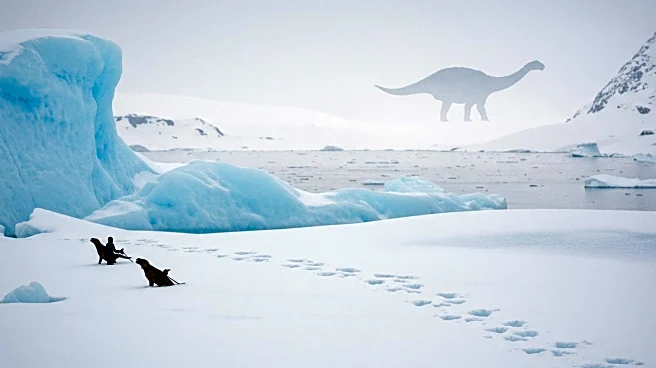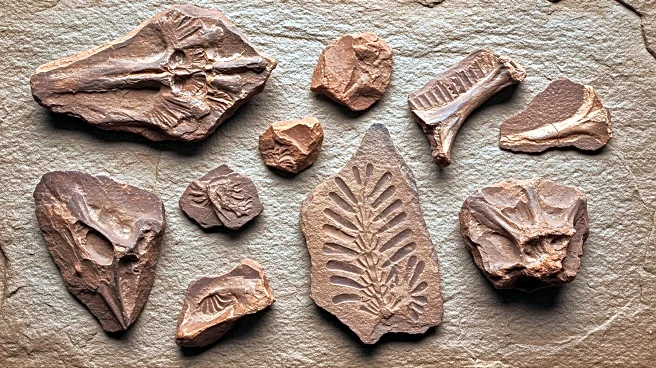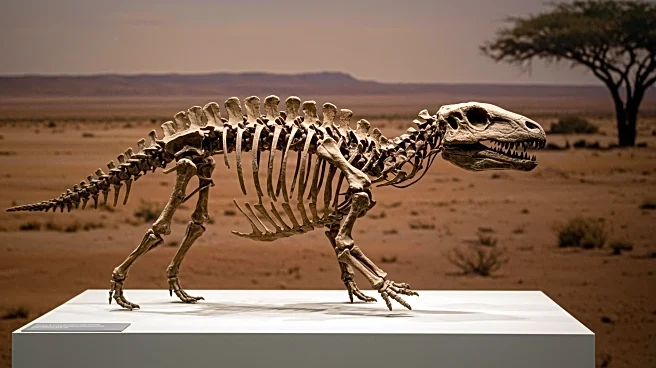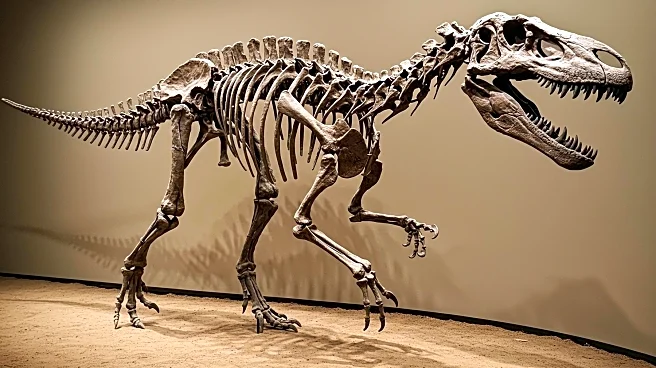What's Happening?
A newly discovered fossil of a giant trapdoor spider, Megamonodontium mccluskyi, has been unearthed in New South Wales, Australia. This species, dating back to the Miocene epoch, measures 23.31 millimeters in body length, significantly larger than modern trapdoor spiders. The fossil was found at McGraths Flat, a site known for preserving Miocene flora and fauna. This discovery marks the first fossil from the Barychelidae family identified globally, offering a rare glimpse into the rainforest environment that once existed in Australia. Researchers used scanning electron microscopy to analyze the spider's features, confirming its evolutionary link to modern species.
Why It's Important?
The discovery of Megamonodontium mccluskyi is crucial for understanding the evolutionary history of spiders, particularly in Australia. As only four spider fossils have been found in the country, this specimen fills significant gaps in the fossil record. The presence of this giant spider alongside other tropical plants and insects provides insights into the biodiversity of Australia's Miocene rainforests. Studying these fossils helps scientists predict how current species might respond to future climate changes, as they offer a tangible link between past environmental conditions and species survival.
What's Next?
Further exploration of McGraths Flat may yield additional fossils, enhancing our understanding of Australia's prehistoric ecosystems. Researchers aim to study the impacts of climate shifts on biodiversity, using the fossil record to track long-term changes in arachnid evolution. This discovery encourages continued investigation into the environmental factors that led to the extinction of species like Megamonodontium mccluskyi.
Beyond the Headlines
The extinction of Megamonodontium mccluskyi due to the drying of the continent highlights the long-term impacts of climate change on biodiversity. This historical context emphasizes the need for conservation efforts to protect modern ecosystems from similar threats. The study of this fossil provides a benchmark for understanding how environmental shifts affect species evolution, offering valuable insights for future ecological research.











